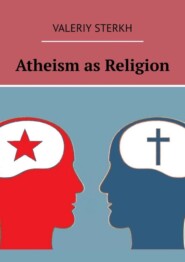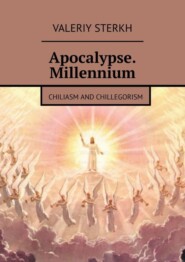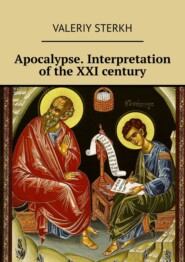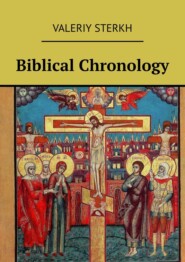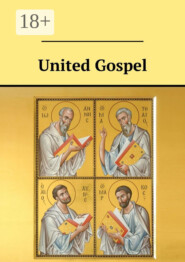По всем вопросам обращайтесь на: info@litportal.ru
(©) 2003-2024.
✖
Gospel harmony
Настройки чтения
Размер шрифта
Высота строк
Поля
Tatian the Syrian was a disciple of Justin the Philosopher (circa 112/120 – circa 180/185), a Christian writer and apologist. By the end of his life he fell into heresy. He is most known for his book «Diatessaron» (Greek διὰ τεσσάρων, which literally means: «through the four»). It connects the four Gospels into one unified narrative which avoids repetitions and reconciles parallel passages. Sometimes it is referred to as «The Gospel from the Four». For several centuries this text was used as standard in some Christian communities, mainly in the churches of Syria and Antioch. Therefore, it is unlikely that Tatian could have written about irresolvable contradictions between the Gospels. Otherwise how could he have harmonized them? The original text of «Diatessaron» has not been preserved (only one fragment was unearthed during excavations at the archeological site of Dura-Europos in 1933). We can only guess at its contents from brief quotations in other ancient writers. For example, Theodoret of Cyprus points out that «Diatessaron» does not include Christ’s genealogies and other passages which show that Jesus came from the line of David according to the flesh. Theodoret found about two hundred copies of «Diatessaron» in his diocese, so he got rid of them and replaced them with the four canonical Gospels.
Other attempts to harmonize the Gospels
From time to time, other attempts have been made to combine the four canonical Gospels into one narrative.
For example, St. Jerome of Stridon mentions one such work by St. Theophilus of Antioch (died after 180): «Theophilus, the seventh bishop of Antioch after St. Peter, who left us a monument of his intelligence by bringing together into one corpus the sayings of the four evangelists» (Letter to Algasia, 6).
In the middle of the third century, a similar work called «Harmony of the Gospels or Diatessaro» was compiled by Ammonius of Alexandria. Its translation into Latin was made by Bishop Victor of Capua (d. 544) and was often reprinted.
The motivation for such an endeavor may have been the opening of Luke’s Gospel: «Forasmuch as many have taken in hand to set forth in order a declaration of those things which are most surely believed among us, even as they delivered them unto us, which from the beginning were eyewitnesses, and ministers of the word; it seemed good to me also, having had perfect understanding of all things from the very first, to write unto thee in order, most excellent Theophilus, that thou mightest know the certainty of those things, wherein thou hast been instructed» (Lk 1:1—4). In a sense, the Gospel of Luke can be considered a book that brings together various gospel texts and traditions.
Minh’s «Latin Patristics» (vol. CLXXVI) cites a twelfth-century Latin commentary on the Gospel harmony by Zacharias Chrysopolitanus.
The Protestant priest Andreas Osiander published «Harmonia Evangelica» in 1537.
In 1776, Johann Jakob Griesbach published a synopsis of the three Gospels (Matthew, Mark, and Luke) in parallel columns, to demonstrate their similarities. Later, the first three Gospels were called «synoptic».
Several hypotheses have been suggested to explain the similarities and differences between the Synoptic Gospels, the most famous of which is the «Q source» hypothesis.
In the 19th century, Leo Tolstoy wrote his «Gospel in Brief», a synthesis of the four Gospels. Like Tatian, Tolstoy changed the Gospel texts. He removed the texts related to the Old Testament, miracles, and the Resurrection altogether. In his pseudo-gospel, Tolstoy rejected the idea of God as the Creator and proposed the idea of the universal good.
St. Theophan the Recluse’s approach in «The Gospel Story», published in 1885, was much more precise.
Many textbooks on «the law of God» reflect the content of the four Gospels. Quite often, however, they stray too far from the original text, which results in major distortions.
United Gospel
The «United Gospel» is my attempt to create a gospel harmony that directly connects the canonical Gospels of Matthew, Mark, Luke, and John into one cohesive narrative. For the content of the book, I used only the words and phrases from the four Gospels. The Russian version of the book is based on the Russian Synodal translation of the Bible, while the English translation uses the King James Version. In some places, I have added my commentary for clarity.
To align the four Gospels, the tables of synoptic parallels were used. The alignment was based on the Gospel Synopsis from the Orthodox Bible, which reproduces a related publication of the Moscow Patriarchate (Bible. Moscow: Russian Bible Society, 2000). In some cases, the comparison was made based the table borrowed from the Belgian edition of the Holy Scriptures (Bible. Brussels: Life with God, 1983). It is worth noting that, for the goals mentioned above, none of the two tables were acceptable «as is», for a number of reasons. In this respect, the interpretation of the Gospel narrative about the resurrection of Jesus Christ proved to be the most critical. To solve the apparent conflict, we have used the sequence from the Harmony of the Gospels, quoted in Seraphim Slobodsky’s «The Law of God» («The Law of God for Families and Schools». Jordanville: Holy Trinity Monastery, 1967).
The principles of the narrative and the analysis of individual chapters of the «United Gospel» will be presented below.
Part 2. Comparing the Gospels
The principles of harmonizing the Gospels
Harmonization of the Gospels is the best way to demonstrate how the texts of the four canonical Gospels can be brought together. Before we begin, let me make a comment.
The Gospel of Matthew contains 28 chapters and 1,071 verses (the average chapter length is 38 verses). The Gospel of Mark consists of 16 chapters and 678 verses (the average chapter length is 42 verses). Luke has 24 chapters and 1,151 verses (the average chapter length is 48 verses). John’s Gospel consists of 21 chapters and 879 verses (the average chapter length is 42 verses). In total, the four Gospels contain 89 chapters and 3,779 verses (the average chapter length is 42 verses).
In the «United Gospel», similar verses are combined; that is why the resulting text is shorter than the total number of the verses in the four Gospels. In addition, I introduced a new chapter division based on the synopsis table, which takes into account the division of the episodes in the narrative. As a result, the «United Gospel» consists of 190 chapters and 3,171 verses (the average length of a chapter is 17 verses).
The texts related to one episode were harmonized based on the internal logic of the story and two foundational principles: a) retaining as much information as possible, and b) maintaining consistency throughout all Gospel narratives.
a) The principle of retaining information
When comparing the texts of the four Gospels, we can clearly distinguish between two types of episodes: unique ones (found only in one Gospel) and parallel ones (found in several Gospels). Unique episodes do not need to be modified; they just need to be arranged in the correct order. As to the parallel episodes, they are more complicated. Similar episodes are usually told in the Gospels with different terminology and varying degree of detail. We should always prefer a more detailed text to avoid the loss of meaning. If none of the four Gospels provide enough clarity on a given episode, then the resulting text should be compiled from parallel episodes taken from different Gospels. And preference should always be given to more detailed descriptions. Alternatively, we can take an episode from one of the Gospels and supplement it with qualifying words and phrases from the other Gospels.
b) The principle of maintaining consistency throughout all Gospel narratives
While forming the resulting text from fragments of parallel Gospel episodes, it is not uncommon to see notable differences between them. Some critics have even claimed that there are «contradictions» between the Gospels. However, such claims are not objective enough since the differences do not lead to irreconcilable inconsistencies. In combining such episodes, we must assume that all the evangelists have given us true information so the resulting text will be harmonious with each of the Gospels and will not contradict any of them.
We will now look at how these principles are put into practice.
Genealogy of Joseph
The Gospel of Matthew (Mt 1:1—17) and the Gospel of Luke (Lk 3:23—38) give two genealogies of Joseph, the adoptive father of Jesus. Both genealogies in the area from David to Joseph are clearly different from each other. Here’s what they look like.
According to Matthew (Mt 1:6—16): David, Solomon, Roboam, Abia, Asa, Josaphat, Joram, [Ahaziah (Jehoahaz)], [Joash (Jehoash)], [Amaziah], Ozias, Joatham, Achaz, Ezekias, Manasses, Amon, Josias, <Jehoiakim>, Jechonias, Salathiel, Zorobabel, Abiud, Eliakim, Azor, Sadoc, Achim, Eliud, Eleazar, Matthan, Jacob, Joseph.
According to Luke (Lk 3:23—31): David, Nathan, Mattatha, Menan, Melea, Eliakim, Jonan, Joseph, Juda, Simeon, Levi, Matthat, Jorim, Eliezer, Jose, Er, Elmodam, Cosam, Addi, Melchi, Neri, Salathiel, Zorobabel, Rhesa, Joanna, Juda, Joseph, Semei, Mattathias, Maath, Nagge, Esli, Naum, Amos, Mattathias, Joseph, Janna, Melchi, Levi, Matthat, Heli, Joseph.
How to harmonize these fragments?
Eusebius of Cesarea wrote the following on the differences in the genealogies: «Because of inconsistencies in the genealogies of Jesus found in Matthew and Luke, there are many Christians who erroneously think of them as contradictory. Many are trying to come up with their own explanations without knowing the truth. Here is what we have learned about them from Aristid’s letter in which [Sextus Julius] Africanus, to whom we recently referred, writes about a way to reconcile the Gospel genealogies. Rejecting the opinions of the rest as erroneous and contrived, he tells a story of what he had heard in the following words:
«In Israel, the names of generations were reckoned either according to the flesh or according to the Law – according to the flesh, when there was a succession of lawful sons, and according to the Law, when a brother of a deceased man, who had died with no sons of his own, would give his child the name of his deceased brother [Deut 25:5—10]. There was no clear hope of resurrection at that time, and so the fulfilment of the future promise was connected to «fleshly» resurrection – so the name of the deceased man would never be blotted out from Israel. That is why some of the ancestors listed in the genealogy were lawful or «natural» descendants of their fathers while others were sons according to the Law, that is, they were born by one father but named after another. And it was customary to mention both – the actual fathers and those whose names were thus restored. So, the Gospels make no mistake in recording their names according to the natural birth and according to the Law. Descendants of Solomon and Nathan were thus intertwined due to the age-long process of «bringing from the dead» those who had no sons, remarrying of the mothers and «restoration of the seed», that one and the same person could be legitimately regarded as a son of his actual father as well as the son of his «sort of» father. Both narratives, therefore, are correct, and they both come to Joseph the right way, though it may seem like a meandering.
To clarify this seeming confusion, I will try to explain what caused it in the first place. If we reckon the generations from David through Solomon, the third one from the end will be Matthan, who begat Jacob, the father of Joseph. According to Luke, the third one from the end, after Nathan, the son of David, was Melki [Matthat (Lk 3:23) – note. V.S.], whose son was Heli, the father of Joseph. Since we are looking at the genealogy of Joseph we must explain why two people are recorded as his father: Jacob, the descendant of Solomon, and Heli, the descendant of Nathan. Why would Jacob and Heli be brothers? And why would their fathers, Matthan and Melki [Matthat], be Joseph’s grandfathers, though they belonged to different lines. Matthan and Melki [Matthat] were both married to the same woman, one after the other, and begat uterine brothers, since the Law didn’t forbid un unmarried woman to remarry, whether she was divorced or widowed. First, Matthan, who was from the line of Solomon, begat Jacob from Esta (this woman’s name according to the Tradition). After Matthan’s death, Melki [Matthat] from the line of Nathan married his widow (as I said, he was from the same tribe but from a different line) and begat his son Heli. So, we will discover that Jacob and Heli were uterine brothers, though belonging to different lines. Heli died without producing children, and Jacob married his wife and begat Joseph (the third generation), who was his son according to the flesh (and according to Scriptures: «Jacob begat Joseph»), and the son of Heli, for his brother Jacob «raised up his seed». So, we must not reject his genealogy. Matthew, the Gospel writer, says: «Jacob begat Joseph». Luke’s genealogy is ascending: «He was the son, so it was thought (he added), of Joseph, the son of Heli, the son of Melki [Matthat]». One could not think of a clearer way to express his sonship according to the Law, so Luke, in speaking about such «births», consistently avoids using the word «beget». His list ends with Adam and God.
All of this is not without a basis and is not arbitrarily contrived. Our Savior’s birth relatives left us the following true story, whether to glorify themselves or purely for our instruction. When a band of marauders from Idumea raided Ashkelon in Palestine, they seized not only the loot from Apollo’s temple, but also Antipater, the son of a certain Herod, who was a hierodule. Because the priest could not redeem his son, Antipater was brought up according to Idumean customs. Later he was well-favored by Hircanus, the high priest of Judea. As an ambassador sent to Pompea on some errand from Hircanus, he obtained for him the kingly authority, which had been usurped by his brother Aristobulus. As to Antipater himself, he prospered; he was appointed the curator (epimelet) of Palestine. After his death – he was murdered out of envy for being so fortunate – his position went to his son Herod. This Herod was later appointed king over the Jews by Antonius and Augustus, as decreed by the Senate. His sons – Herod and others – were tetrarchs. Of these events we also know from the Greek history.
Until then, the archives had kept genealogies of both Jews and ancient Proselytes, such as, for instance, the genealogies of Achior the Ammonite and Ruth the Moabite, as well as genealogies of Egyptians who intermarried with the Jews. Having no connection whatsoever to the Jewish people, Herod, ashamed as he was of his ignoble blood, ordered that all the records of genealogies be burnt in hope that he could be reckoned as a noble-born, if no one was able to trace his line to Patriarchs, Proselytes or Gyiurs (converts to Judaism) using the public records. As a result, there were very few people who retained any memory of their ancestry. If they did, it was by keeping their own genealogical records or just by remembering the names of the ancestors, or keeping their own lists. People were proud of preserving the memory of their high blood. Among them were also the above mentioned «desposiny» – those related to the family of the Lord. Natives of Jewish settlements, Nazareth and Kohaba, they spread wide across the land and compiled the above-mentioned genealogy based on the «Book of Days», as best they could.
Whether it is so or not, it would be hard to come up with a better explanation – this is my opinion as well as that of any reasonable person. To this we will hold, even though it has not been confirmed by evidence – because there nothing better or more correct to hold on to. And as to the Gospel, it is all true, to say the least».
At the end of the same letter, Africanus adds: «Matthan, a descendant of Solomon, begat Jacob. After the death of Matthan, Melki [Matthat], a descendant of Nathan, begat Heli by the same woman. Therefore, Heli and Jacob must be uterine brothers. Heli died childless; Jacob raised up his seed by begetting Joseph who was his son according to the flesh, and Heli’s son according to the Law. So, we can say that Joseph was the son of them both».
This is the testimony of Afrikanus. If such was the genealogy of Joseph, then Mary had to be from the same tribe, for, according to the Law, it wasn’t allowed to marry outside your tribe. The Law said that a man should take a wife out of the same town and the same family so that the inheritance would not go from one tribe to another. With this let us end» (The History of the Church, 1.7).
The explanation offered by Africanus is correct, though he confused Melki with Matthat. The genealogy in Matthew lists births according to the flesh; the one in Luke is according to the Law. It must be added that the levirate links between the two genealogies are found not only at the end, but also in the beginning. This conclusion is obvious because both genealogies intersect in the middle at Zerubbabel, son of Shealtiel (see Mt 1:12—13; Lk 3:27). Nathan was the older brother; Solomon was younger, next in line after him (see 2 Sam 5:14—16; 1 Cron 3:5), therefore he was the first candidate to a levirate marriage (compare Ruth 3—4; Lk 20:27—33). The Old Testament is silent on whether Nathan had children, so we may very well conclude that he had none. Solomon, however, had much capacity for love: «And he had seven hundred wives, princesses, and three hundred concubines» (1 Kings 11:3). So, in theory, he could have married Nathan’s widow. If this is so, Mattatha is the son of Solomon according to the flesh and the son of Nathan according to the Law. In light of the above-mentioned circumstances, the differences between the two genealogies no longer present a problem.
From the above, it is clear that both genealogies are true, but show the origin of Joseph in different ways. Therefore, in accordance with the principle of preserving information, both genealogies should be preserved (see UG 2 [United Gospel, chapter 2]).
The birth of Jesus
The account of Jesus’ childhood is found in both Matthew and Luke. But they tell the story differently.
According to Matthew, the events happened in the following order:
The angel announces the birth of Jesus to Joseph (Mt 1:18—25; UG 8). Jesus is born in Bethlehem, and the Magi come to worship him (Mt 2:1—12; UG 14). Jesus’ family flees to Egypt to escape the wrath of Herod (Mt 2:13—15; UG 15). The massacre of the innocent takes place near Bethlehem (Mt 2:16—18; UG 16). The holy family returns from Egypt and settles in Nazareth (Mt 2:19—23; UG 17).
According to Luke, things happened as follows:
Gabriel announces the birth of Jesus to Mary (Lk 1:26—38; UG 4). Joseph takes his pregnant wife from Nazareth to Bethlehem to participate in the census; Jesus is born (Lk 2:1—7; UG 9). The angel announces the birth of Jesus to the shepherds (Lk 2:8—14; UG 10). The shepherds come to worship Jesus (Lk 2:15—20; UG 11). Jesus is circumcised and named Jesus (Lk 2:21; UG 12). The days of purification; Jesus is brought to the temple (Lk 2:22—38; UG 13). Jesus’ family returns to Nazareth (Lk 2:39; UG 17).
In Matthew, the birth of Jesus is announced to Joseph by the angel of the Lord, but in Luke, the prophecy of Jesus’ birth is announced to Mary by the archangel Gabriel. These are two different annunciations, separated by some time. First, Gabriel appeared to Mary and announced to her that she would conceive from the Holy Spirit (Lk 1:26—38; UG 4). Then she became pregnant, and Joseph found out about it. Next, the angel of the Lord, most likely Gabriel, appeared to Joseph to announce the birth of Jesus and encourage him to accept Mary and her son (Mt 1:18—25; UG 8).






